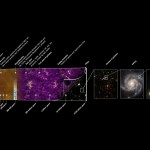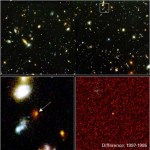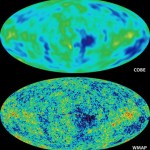constant
"The joy of life consists in the exercise of one's energies, continual growth, constant change, the enjoyment of every new experience. To stop means simply to die. The eternal mistake of mankind is to set up an attainable ideal." -Aleister Crowley
But the Universe itself experiences continual growth, constant change, and new experiences all the time, and it does so spontaneously.
Image credit: ESA and the Planck collaboration.
And yet, the better we understand our Universe -- what the laws are that govern it, what particles inhabit it, and what it looked/behaved like farther and…
Sure, there's dark energy, but what does that really mean? First off, there's the bizarre phenomenon we see: very distant objects appear dimmer than we expect in a Universe filled with just matter and space. This supernova (above) should appear much brighter for how distant it is, based on what we know about supernova. This means one of three things are going on:
Supernova were intrinsically different when they were younger, and inherently fainter.
Some type of dust is blocking the light from distant supernova, making them seem fainter.
These supernova are actually farther away than we had…
The cosmic microwave background is the radiation left over from the big bang. It's very uniform, 2.725 Kelvin everywhere. We're moving with respect to it, so there's a doppler shift, and we see that as a dipole moment in the Temperature. When we subtract that out, we see variations on the order of 30 microKelvins! WMAP is a satellite (Wilkinson Microwave Anisotropy Probe) that measured these anisotropies, and they just released its year 5 data. First off, with the uniform and dipole parts subtracted out, and with the foreground from the galaxy also taken out, here's the map of the microwave…


